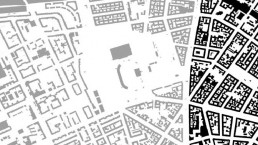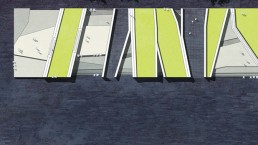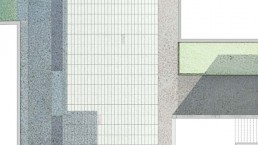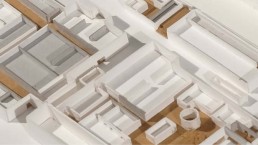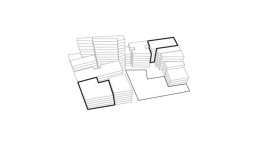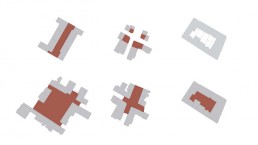DENSITY + OPEN SPACE / PRENZLAUER BERG
SEMINAR
SS 17
The current wish to live and work in urban areas is the main cause for the densification of city centres. Thus the pressure on open spaces rises twofold: inner-city open spaces are being built on and hence slip the urban fabric, at the same time the pressure of use on the remaining open spaces increases with the mounting number of inhabitants. The seminar investigates the relation of density and open space reflecting this current developments.
The seminar is structured in two parts: First, the topics of density and open space will be worked on by evaluating literature. In a second step, examples of very dense urban structures and related open space typologies are to be analysed, such as Buenos Aires, Seoul, Barcelona, New York, Berlin. Among others, the urban design parameters, the historical course of the densification process, the originated building and open space typologies, key figures of density and so on will be examined and contraposed. Also the question of the quality and functionality of the remained open spaces will be focussed upon.
The densification process in the examination area in Prenzlauer Berg, Berlin, begins with the industrialization and is based on James Hobrecht’s plans of the city’s expansion. Within this planning, existing superordinate path and street connections and plot directions are being considered. In this way, a great diversity within the blocks’ layouts and in the hierarchies and dimensions of the streetscapes and open spaces emerges.
Green spaces, existing manufacturing facilities or non-assessable uses, like the Jewish graveyard or the water town for example, remain incorporated and largely protected. Town and decorative squares already designated in the Hobrecht plan are built as planned and not overbuilt within the on-going growing process.
Compared to other quarters determined by very even urban grids (Buenos Aires, Barcelona, Manhattan), typical and diverse city units and neighbourhoods are formed by the differentiated urban structure. The individual units can be easily distinguished as such and demarcated from one another. The special open spaces like Helmholz or Kollzwitz Square or and streets like Metzger or Danziger Strasse are generally indetity-establishing. Furthermore, converted historical manufacturing sites constitute fields of attention in the area: in the Kulturbrauerei buildings and open spaces create a catchy, almost ‘medieval’ pittoresque sequel of spaces.
| Author/s | Ombeline Boyer, Hugo Pachoud |
| Phase(EN) | Final Submission |
| Location | Berlin |
| Categories | Seminar |
